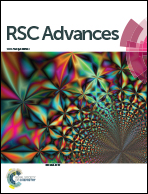DFT investigations of the adsorption and hydrodesulfurization mechanism of thiophene catalyzed by Pd(111) surface
Abstract
The adsorption behavior and the selective hydrodesulfurization mechanism of thiophene on a Pd(111) surface were elucidated by density functional theory (DFT). All the pertinent species of different pathways were gathered to obtain their preferred adsorption sites. The activation energy and reaction energy of each step in different pathways were also calculated. The results show that the adsorption at the hollow site was the most stable when the thiophene was parallel to the Pd(111) surface with a ring plane. In the process of hydrodesulfurization, the heat of reaction was almost negative; therefore, reducing the temperature is helpful for the removal of S atom. The mechanism of direct hydrodesulfurization has a low activation energy, but the reaction has more than one possible product and is difficult to control. The mechanism of indirect hydrodesulfurization was the best fit for the 1,2-cis-hydrogenation process. The most feasible reaction pathway is (1) C4H4S + H2 → α,β-C4H6S; (2) α,β-C4H6S + H2 → C4H8S; (3) C4H8S + H2 → C4H10 + S. Among these steps, the formation of C4H8S is the rate-determining step.


 Please wait while we load your content...
Please wait while we load your content...